By Vivian Young, AICP
Between now and 2070, Florida is projected to add more than 12 million residents, resulting in the loss of 190 acres of land a day to development. The state could lose another 92 acres of land a day to sea level rise, with close to a million Floridians being forced to relocate.
The bottom line? More people on less land. The time is now for Florida’s leaders to commit to sound and fiscally responsible planning for what will be a more challenging future.

A joint project of the University of Florida Center for Landscape Conservation Planning (UF) and 1000 Friends of Florida, Florida’s Rising Seas is a GIS-based analysis
continued on page 4
continued on page 4
Florida’s
FLORIDA’S
FLORIDA PLANNING A publication of the Florida Chapter of the American Planning Association The Florida Chapter of APA provides statewide leadership in the development of sustainable communities by advocating excellence in planning, providing professional development for its members, and working to protect and enhance the natural and built environments. OTHER FEATURES President’s Message - p. 3 Newest AICP Members - p. 25 Executive Director Message - p. 26 Planners on the Move - p. 26 APA Working for You - p. 27 Consultants Directory - p. 28 Events - back page Growth Management Amid Local Pre-emption 12 9 2006 Housing Summit Revisited 16 RPCs: Need Then and Now! 19 Living La Vida Local: Leaning Into the Live Local Act 21 Florida Planning Conference 2023: Receptions & Tours 24 Make Plans to Attend the Annual Member Meeting ALSO IN THIS ISSUE florida.planning.org THE THROWBACK ISSUE - Summer 2023
Rising Seas: MAPPING
FUTURE
[APA FLORIDA] KEY CONTACTS - EXECUTIVE COMMITTEE
Name
APA Florida Executive Committee
President Whit Blanton, FAICP
Immediate Past President Wiatt Bowers, AICP
President-Elect Allara Mills Gutcher, AICP
Treasure Coast Section Kori Benton, AICP
Professional Development Henry Bittaker, FAICP
VP Continuing Education Lara Bouck, AICP, PE
San Felasco Section Juan Castillo
Phone E-mail
727-464-8712 president@floridaplanning.org
904-363-8488 pastpresident@floridaplanning.org fx
850-319-9180 presidentelect@floridaplanning.org
727-462-2518 treasurecoast@floridaplanning.org
561-523-0687 profdevelopment@floridaplanning.org
407-481-5672 certmaintenance@floridaplanning.org f
352-393-8698 sanfelasco@floridaplanning.org
Sun Coast Section Katrina Corcoran, AICP suncoast@floridaplanning.org
VP Membership/Outreach Ennis Davis, AICP
Gold Coast Section Fabian De La Espriella, AICP
VP Communications Amy Elmore, AICP
Capital Area Section Macy Falcon, AICP
Promised Lands Section Jason Green, AICP
Broward Section Daniel Keester-O'Mills, AICP
University Liaison Van Linkous, Ph.D.
Heart of Florida Section Laura Lockwood-Herrscher, AICP, CPM
VP Conference Services Eddie Ng, AICP
Orlando Metro Section Luis Nieves-Ruiz, FAICP
VP Section Affairs Ali Palmer
Atlantic Coast Section Brad Parrish, AICP
Secretary Jill Quigley, AICP
Treasurer John Roach, AICP
904-396-5727 membership@floridaplanning.org
786-245-5202 goldcoast@floridaplanning.org
813-273-3774 communications@floridaplanning.org
850-380-2812 capitalarea@floridaplanning.org
863-255-3212 promisedlands@floridaplanning.org
954-786-5541 broward@floridaplanning.org
813-503-2797 university@floridaplanning.org
863-860-5105 heartoffl@floridaplanning.org
401-524-3263 conferencesvcs@floridaplanning.org
407-245-0300 orlandometro@floridaplanning.org
850-553-3528 sectionaffairs@floridaplanning.org
321-567-3776 atlanticcoast@floridaplanning.org
954-641-5680 secretary@floridaplanning.org
561-822-1448 treasurer@floridaplanning.org
407-839-4006 epg@floridaplanning.org af First Coast Section Ray Spofford, AICP
EPG Representative Jarrell Smith
Student Representative Sabrina Viteri
Emerald Coast Section Randy Woodruff, AICP
Executive Director Stefanie Svisco
Ad. Assistant/Bookkeeper Suzie Gray
Communications Manager Patti Shea
Legislative Representative Lester Abberger
Communications Intern Tyler Hast
Graphic Design (Consultant) Summer Taylor
904-265-3189 firstcoast@floridaplanning.org
407-488-6971 students@floridaplanning.org
850-689-7347 emeraldcoast@floridaplanning.org
850-201-3272 ssvisco@floridaplanning.org
850-201-3272 sgray@floridaplanning.org
850-201-3272 pshea@floridaplanning.org
850-524-2779 lesterabberger@gmail.com
850-201-3272 intern@floridaplanning.org
727-452-2416 summer@exaktmarketing.com
All other inquiries, contact APA Florida at 850-201-3272 or e-mail contact@floridaplanning.org
2 Summer 2023 / Florida Planning
I can vividly remember in 1987 being a young Florida State University graduate student sitting way down low in a bean bag chair in front of the executive director’s enormous desk as we discussed the content for the next issue of Florida Planning .


Talk about power dynamics! As newsletter editor, it was my job to pull together stories and section updates for each month’s issue: edit them for clarity and space, layout (no desktop publishing!), and then deliver the issue to the published and ensure it was chapter members. It was a great immersion into new growth management laws and related planning issues facing fast-growing Florida and its community planners.
Fast-forward 36 years and many of those same issues remain at the forefront. Transportation, housing, schools, environmental management, and more are critical issues, with some new buzzwords in the mix, as we wrestle anew with more than 1,000 new residents every day.
Many of you in local government will remember the battles with the state’s Department of Community Affairs over comprehensive plans, bristling at the heavy-handed state government rules, oversight, and interpretations that often seemed to ignore local context. There was a natural tension between the role of the state with mandated growth management, consistency with Chapter 163 and Rule 9J-5, and local governments navigating their local politics, development pressure, and desire to be true to their character. Everybody was just trying to figure things out as best they could.
As a young transportation planning consultant, I was charged with reviewing comprehensive plans under contract with the Florida Department of Transportation District 5. One of the best plans I reviewed, probably around 1992 or so, was the Traffic Circulation Element of the City of Winter Park’s Comprehensive Plan. It was a very thoughtful plan, with roadway configurations and typologies based on the context of the land use, showing a connected network of wide sidewalks, shared-use paths and on-street bicycle facilities. As an alternative to tying everything to roadway level of service, the plan set standards for accessibility and connectivity. Widening the city’s constrained roads would clearly harm the city’s character. The plan was visionary and nicely aligned with the Future Land Use Element in this mostly built-out, redeveloping city focused on quality of life for its residents instead of accommodating the demands of suburban commuters into downtown Orlando. All of this was a precursor to today’s Context Classification framework and flexible multimodal standards now employed by FDOT.
My review, which was basically “two thumbs up, cannot complain,” drew a harsh rebuke from FDOT District 5 staff. The city’s plan did not check all the boxes required
continued on page 28
Summer 2023 / Florida Planning 3
PRESIDENT’S
MESSAGE
This throwback issue of Florida Planning sheds some insights on our state’s planning legacy, updated to reflect current conditions.
[FLORIDA'S] RISING SEAS
of the intersections between sea level rise, population growth, and development patterns.
Based on moderate projections, it includes baseline mapping and two future scenarios for 2040 and 2070 – a Sprawl Scenario showing continuation of existing development patterns and a Conservation Scenario reflecting more compact patterns of development while avoiding priority conservation lands.
Using the most recent data, Sea Level 2040 focuses on nearerterm future scenarios that can be used for conservation and other community and state planning, including the 18 million acres of connected lands and waters known as the Florida Wildlife Corridor. Building on earlier 2070 studies, Sea Level 2070 provides longerterm future scenarios to reflect the cumulative effects of many decisions over decades.
As the UF center founder and director Dr. Tom Hoctor notes, “we are now starting to reach a threshold where we can expect more rural impacts from sprawling development, including on areas important for protecting Florida’s biodiversity, ecosystem services, and natural capital.” While there is still time to protect the most strategically important resources, he continues, “it will require a multi-decade commitment to conservation land protection as well as the use of other tools to reduce greenfield development.”
“It is essential that planners in Florida use all tools possible to promote more compact development,” explains 1000 Friends
President Paul Owens. “Not only this will create more livable communities but will also protect essential conservation and agricultural lands from development.”
Florida’s Rising Seas results from a longstanding partnership between 1000 Friends and UF to promote landscape-scale conservation, from helping to establish the state’s landmark land conservation programs – Preservation 2000 and Florida Forever – to planning for Florida’s system of greenways. These in turn created the foundation for today’s Florida Wildlife Corridor.
This project builds on earlier GIS-based studies, 2006’s Florida 2060, spearheaded by then 1000 Friends Chairman Tim Jackson and Board Member and UF GeoPlan Center Director Paul Zwick, and 2016’s Florida 2070 and Water 2070.
The primary goal of earlier scenarios was to help citizens and community and state leaders visualize the long-term impacts of decades of incremental planning decisions. With Sea Level 2040, the project can now be used as a planning tool, particularly for smaller counties that may not have robust planning staff or GIS capabilities. More information on the project can be found at 1000fof.org/sealevel2040/, with county-level GIS mapping and data coming online soon.
Vivian Young, AICP, is the Communications Director for 1000 Friends of Florida and has played a leading role in the 2040, 2060, and 2070 studies. She can be reached at vyoung@1000fof.org
continued on page 5
The East Central Florida Regional Planning Council is proudly celebrating 60 years of service in the ECF region with expertise in:




Brownfield Assessments Emergency Preparedness Economic Development Community Planning
Planning
4 Summer 2023 / Florida Planning
from cover
continued
You
know the region, know the experts in it.
Resilience
PEOPLE PLACES PROSPERITY Join the East Central Florida Regional Resilience Collaborative in helping empower the communities in East Central Florida to advance resilience strategies that strengthen and protect built infrastructure and the natural environment, enhance health and equity, and ensure a thriving economy
RISING SEAS

Summer 2023 / Florida Planning 5
ORIGINAL Original Florida Planning Publish Date: January 2007
on page 6
[FLORIDA'S]
continued from page 4
continued
[FLORIDA'S] RISING SEAS
continued from page 5
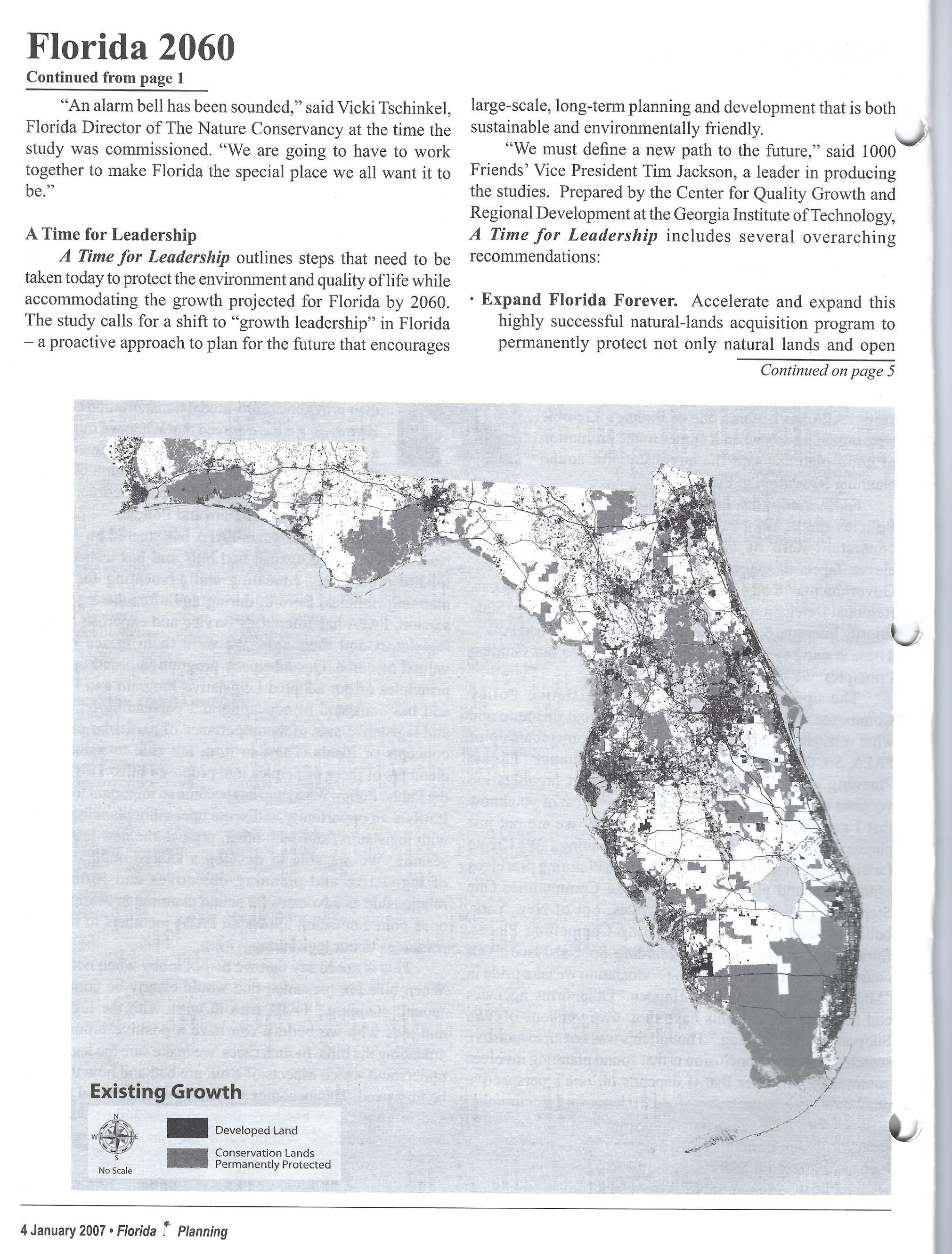
6 Summer 2023 / Florida Planning
[FLORIDA'S] RISING SEAS
continued from page 5
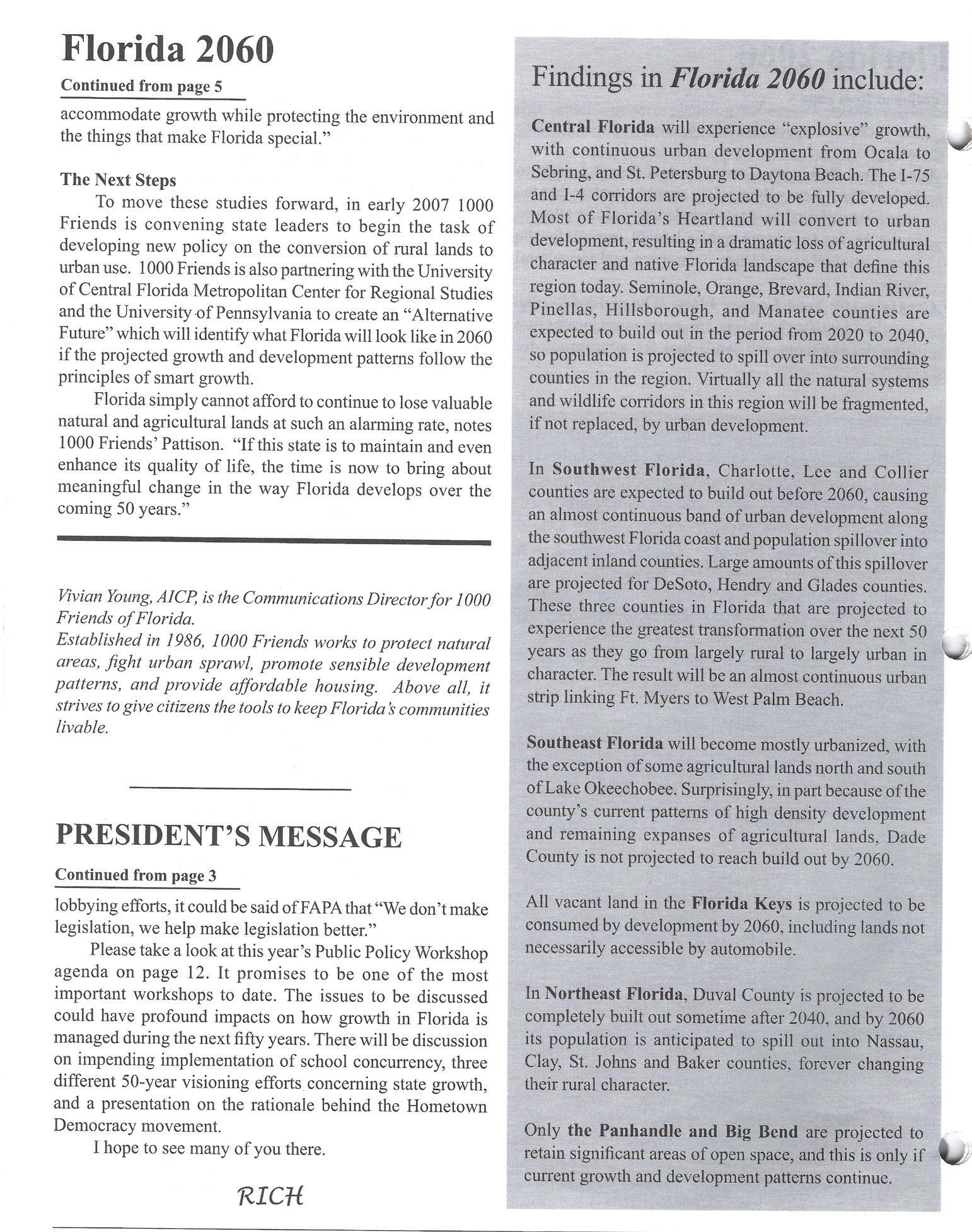

Summer 2023 / Florida Planning 7

8 Summer 2023 / Florida Planning
2006 Housing Summit Revisited
By Susan Caswell, AICP
Ok that’s me being pretentious, but in my defense, the original quote was in French. The English translation: The more things change, the more they stay the same.
That was my first thought (in English, not in French) when I reread my 2006 Florida Planning article on affordable housing. Most of it is still true today … only more so.
However, my perspective on how to address it has changed somewhat. Most, if not all, of the strategies covered at the summit are still viable, but they’re not going to produce nearly enough units to address the lack of housing. We need a broader approach.
The summit was held after five years of a booming housing market (which we now know was a bubble, followed by the Great Recession). During that period housing costs doubled, making housing affordability a more critical issue than ever. But even as we were holding the summit, the housing market was starting to crash.
As a result, the homebuilding industry today is not quite the same, nor is the housing market for consumers. Financing is more restrictive for prospective homebuyers, and supply is not meeting demand. (Between 2010 and 2020,
Osceola’s population grew by 45 percent, while permanent housing stock increased 20 percent.) As for the homes themselves: the average new home hovers around 2,500 square feet, twice the 1960 average size, while household size continues to decrease. (In 2022, 64 percent one- or two-person households nationally.) Prices and rents continue to rise considerably faster than income.

The Housing Summit was, intentionally, a workforce housing summit. Calling it workforce housing made it clear it was housing for our labor force, but it also was an attempt to erase the stigma attached to the term affordable, because any term used for affordable housing eventually gets a bad rap. But comparing the sheer number of units needed (and who they’re needed for) with what’s being built, it’s not hard to see a growing mismatch. So, I’ve stopped calling it anything but what it is – housing.
And housing is a planning issue. So, employ some or all of the strategies mentioned in 2006 – there are a lot of good ideas there – but don’t skip the basics. We as planners need to do what we can to set the stage for the market to provide more housing of the type and size needed. Given demographic shifts and income profiles, in many places that means encouraging more multifamily rental housing.
Summer 2023 / Florida Planning 9
Plus ça change, plus c’est la même chose.
continued on page 10
[2006 HOUSING SUMMIT] REVISITED
continued from page 9

• Maximize the potential on the FLU Map for higher density and rental housing. (Most maps already have single family covered.)
• Mixed-use designations can open up new areas for housing and locate it near jobs and services. In the most recent EAR-based Comprehensive Plan update, Osceola designated mixed-use centers throughout the urban area and allowed high-density residential in many commercial areas (as well as non-residential in higher-density areas).
• Rework the land development code and then stress-test it, so you can work out the bugs before someone comes in with,
say, a bungalow court. You’d be surprised what provisions of the code could stall a project.
And one last thing, because it’s been on my mind lately – it’s way past time to work on proportional impact fees. Studies recently completed in Osceola show that studio and one-bedroom units should be paying about $300 to $600 per unit for school impact fees, far less than the standard multifamily fee of over $12,000. The same likely holds true for transportation and park fees. If we need more smaller units (which we do), this is a good place to start.
Susan Caswell, AICP, is the Sustainability Director for Osceola County. She can be reached at susan.caswell@osceola.org.
Original Florida Planning Publish Date: June/July 2006
10 Summer 2023 / Florida Planning
ORIGINAL
continued on page 11
[2006 HOUSING SUMMIT] REVISITED
continued from page 10

Summer 2023 / Florida Planning 11

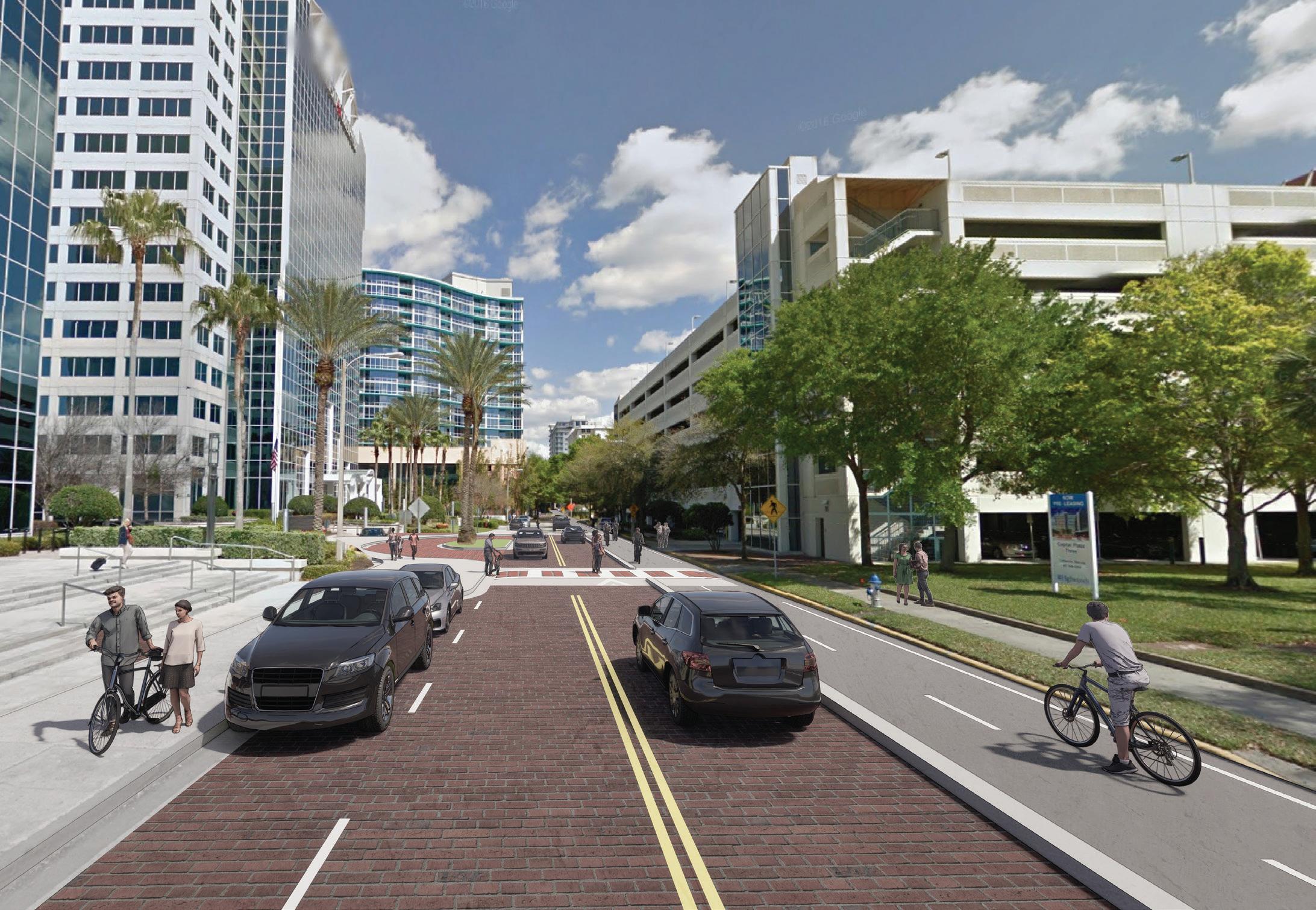

12 Summer 2023 / Florida Planning SR 200-A1A Corridor Master Plan
GAI’s Community Solutions Group is an idea driven strategic consulting practice that is committed to enhancing communities in ways that are sustainable, vibrant, livable, and authentic to the people we serve. gaiconsultants.com/communitysolutions Planning | Urban Design Landscape Architecture Economics | Real Estate Orlando Bike Gap Study Ideas Transform Communities The greatest accomplishments start with the smallest details.
Creating Great Community Places
FLORIDA’S CHANGING GROWTH MANAGEMENT Landscape and the Challenges of State Preemption
By: Mari Daniels, AICP, & Jeffrey Hays, AICP
Growth management in Florida has undergone significant changes in recent decades, with the oversight agency responsible for planning and management adapting to shifting state priorities.
The Department of Community Affairs (DCA) was established in the 1970s, gradually gaining greater control over local planning until the 1985 Growth Management Act. This act mandated comprehensive plans for every local government, addressing land use, transportation, and environmental concerns. The DCA was tasked with reviewing these plans for compliance.
In 2011, the agency was renamed the Department of Economic Opportunity under the Community Planning Act, focusing on allowing growth with fewer obstacles. This year, new legislation further altered growth management, renaming the oversight agency the Department of Commerce, once again reflecting a new mission while it still remains the agency charged with managing growth in the state.
The 1985 Local Government Comprehensive Planning Act, also known as the Growth Management Act, marked a pivotal moment for statewide mandated planning in Florida. Resulting from the Environmental Land Management Study (ELMS 2), it aimed to address rapid population growth and environmental degradation. Comprehensive plans were mandated and enforced, and concurrency, the requirement that the infrastructure necessary to support growth was in place concurrent with the impacts of growth was introduced. While the 1985 act was commendable for its strong planning legislation, certain aspects, like transportation concurrency, contributed to ongoing issues of sprawl. ELMS III in the 1990s signaled a shift toward reduced state control over planning.
In the 2000s, state oversight of comprehensive planning continued to relax, resulting in quicker review processes and more
alternatives for concurrency. The economic downturn in 2007/08 led to further changes, weakening the resolve for strong state planning oversight. The 2011 Community Planning Act changed the purpose of the act to manage (not control) future development “consistent with the proper role of local government”. (DEO website)

Unfortunately, the 2011 changes were made by a small number of state officials without a thorough review of what needed to be done to maintain sound planning statewide. The section of Florida’s Administrative Code that helped implement the statutes, 9J-5, was repealed. The Act deleted provisions encouraging local governments to create a vision of its future physical appearance.
Since 2011, the state has increasingly looked to preempt local governments from exercising home rule as it relates to planning and growth management. State preemption has presented challenges for local government planners, limiting their ability to respond to unique community needs. The one-size-fits-all approach imposed by state decisions may not align with the vision and values of local residents, hindering sustainable growth and preservation efforts.
Namely, affordable housing efforts have been affected by conflicting legislation in recent years. In 2018 legislation was adopted requiring local governments to fully cover the cost of mandated affordable housing. Then in 2019, legislation regarding impact fees was amended to allow local governments to exempt affordable housing developments without having to cover the cost of the fee from another source. In 2023, the Live Local Act amended recent legislation to not only allow but require approval of affordable housing in commercial, industrial and mixed-use land uses as long
continued on page 14
Summer 2023 / Florida Planning 13
[CHANGING] GROWTH MANAGEMENT
continued from page 13 as minimum local requirements are met. As this legislation also added funding and tax incentives for housing, we will have to wait and see what the effect of Live Local will be both for affordable housing and the design and function of local communities.
As Florida’s planning landscape continues to evolve, local governments must navigate the remaining tools to develop strong comprehensive plans that address equity, environmental protection, and economic development. This requires well-informed planners who understand the evolving state laws and can advocate for a balance between state preemption and local control.

Collaborating and voicing concerns collectively, planners can influence legislative decisions to better align with community needs and foster sustainable growth while respecting state interests. Strong planners, well-versed in the concepts of planning and changing state law are needed now more than ever.
Mari “Missy” Daniels, AICP, is an Assistant County Manager for Alachua County’s Public Works and Growth Management Department. She can be reached at MDaniels@AlachuaCounty.US.
Jeff Hays, AICP, is the Growth Management Director for Alachua County. He can be reached at jhays@alachuacounty.us.
ORIGINAL
Original Florida Planning
Publish Date: September 2000
14 Summer 2023 / Florida Planning





[CHANGING] GROWTH MANAGEMENT continued from page 14 Tomorrow's challenges need more than a planner. They need a Knight. UCF's innovative Master of Science in Urban and Regional Planning program prepares planning professionals to tackle the technical, fiscal, environmental and policy challenges of today and tomorrow - all from the heart of downtown Orlando. No GRE Requirement Accredited by the Planning Accreditation Board Flexible Coursework for Professionals Experiential Learning Opportunities Learn More About This Program ccie ucf edu/public-administration
Florida’s 10 Regional Planning Councils
Continue to Provide Local Knowledge
and Regional Solutions for Statewide Impact
By: Denise Imbler
Spanning more than 50 years, Regional Planning Councils were developed out of a need for regional collaboration amongst local governments and state agencies to address issues related to community development. Supported and funded by their member local governments and administered through the Florida Regional Councils Association, RPCs provide technical and planning assistance in coordination with federal, state, and local governments.
Reinventing themselves after the repeal of growth management legislation in the early 2000s, today RPCs continue to serve their communities by leveraging federal, state, and local partnerships in program areas of Emergency Preparedness, Resiliency, Economic Development, Transportation, and Quality of Life.
EMERGENCY PREPAREDNESS
RPCs partner with local governments, emergency management officials, and federal and state agencies including nonprofit and religious organizations to aid citizens and businesses impacted by disasters. Through staffing of Local Emergency Planning Committees and coordination and presence in Emergency Operations Centers around the state, RPCs continually assist with first responder training, and planning, preparing and responding to manmade and natural disasters. This continuing commitment to be there in the planning and preparation, evacuation and emergency operations, and short and long-term recovery is a hallmark of the mission of Florida’s RPCs.
RESILIENCY
The ability to bounce forward, absorb, recover, and thrive in the face of short-term shocks like hurricanes or infrastructure failures and long–term stressors like affordable housing, aging infrastructure, shifting economic trends, and climate change, these are challenges all 10 RPCs are actively involved in. RPCs support resiliency planning locally and regionally through vulnerability assessments, adaptation action planning, and sea level rise mapping; five RPCs coordinate Regional Resiliency Coalitions.
ECONOMIC DEVELOPMENT
RPCs working with federal, state, and local partners, complete regional economic impact analysis, maintain regional comprehensive economic development strategies, provide technical assistance for economic development grants, and administer revolving loan funds for small business loans and brownfields redevelopment. All 10 Florida RPCs have been involved in recovery from disasters in the last decade. Whether dealing with devastating hurricanes, inland flooding, or global pandemics, RPCs work with recovery partners and sustain long-term economic development initiatives to rebuild Florida’s communities.
TRANSPORTATION

RPCs participate in the Transportation Disadvantaged program, serve as staff to local Metropolitan/Transportation Planning Organizations, and provide planning services for Complete Streets, Safe Routes to Schools, and Greenways and Trails.
QUALITY OF LIFE
RPCs assist local communities as they implement community visions and strategies. Brownfields programs across the state work to provide resources that clean up abandoned or underused commercial and industrial sites. Many RPCs also provide other services to enhance the quality of life using GIS mapping and affordable housing initiatives.
Were it not for the continued commitment of member local governments these programs, services, and technical assistance would not be available. It is this level of commitment on both the part of local governments and RPCs which continue to foster true regional coordination. To find out more about the variety of projects RPCs accomplish around the state visit FRCA’s website.
Denise Embler is the Statewide Coordinator for the Florida Regional Councils Association. She can be reached at dimbler@arpc.org.
continued on page 17
16 Summer 2023 / Florida Planning
PLANNING COUNCILS
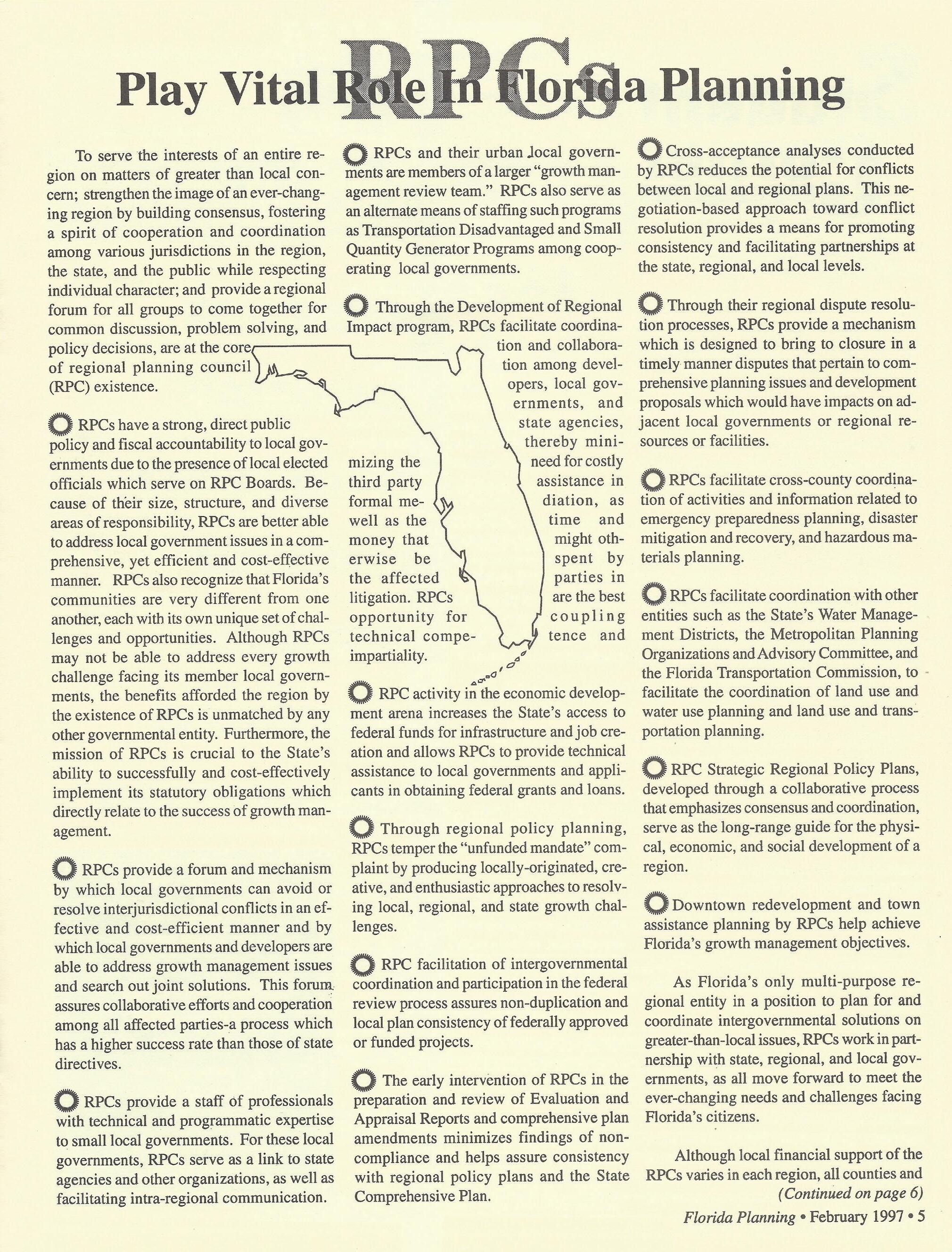
Summer 2023 / Florida Planning 17
16 ORIGINAL Original Florida Planning Publish Date: February 1997
[REGIONAL]
continued from page
continued on page 18
[REGIONAL] PLANNING COUNCILS


continued from page 17
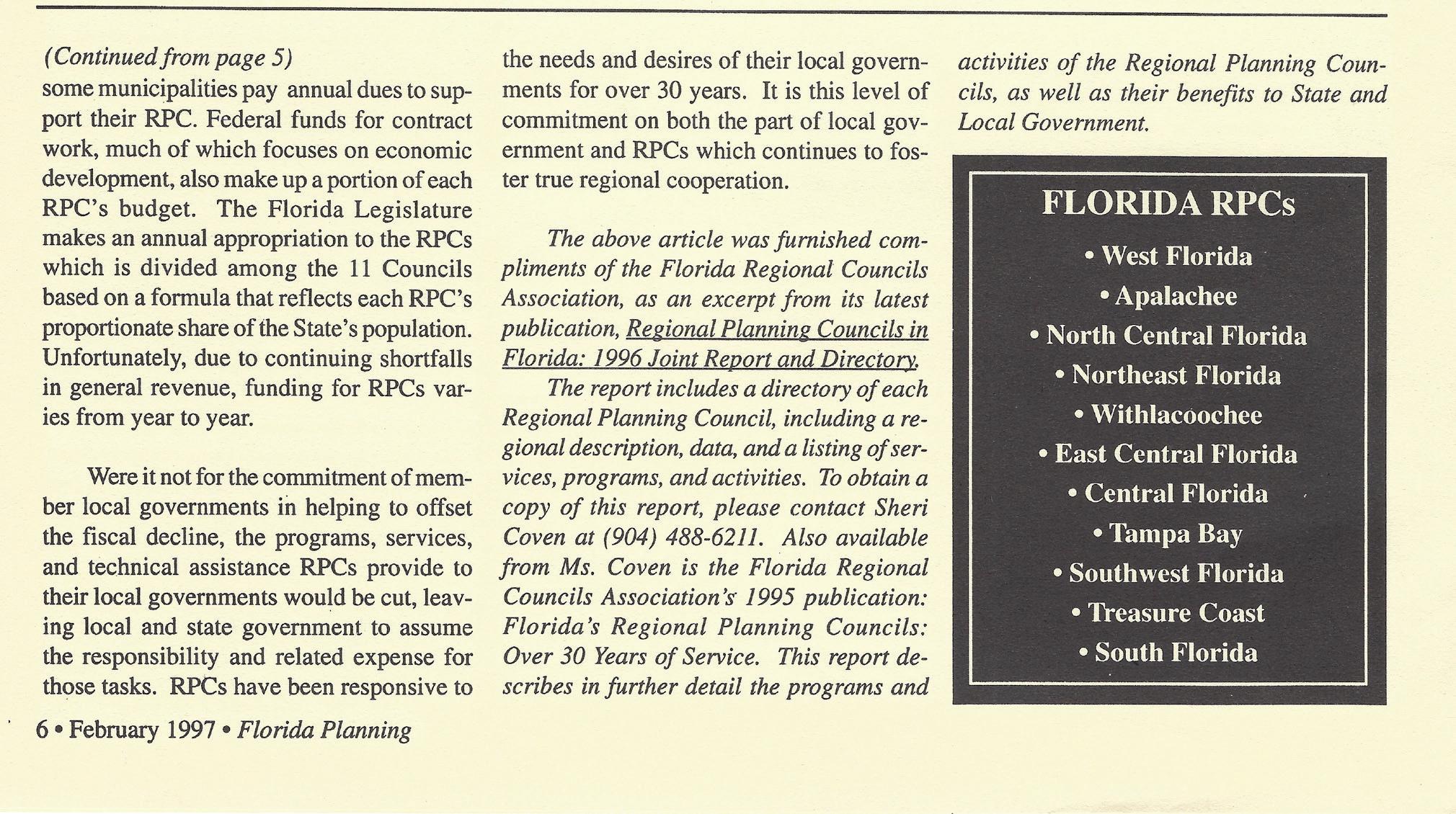
18 Summer 2023 / Florida Planning
Living La Vida Local: Leaning Into the Live Local Act
If you’re anything like this planner, you immediately started singing to yourself Ricky Martin’s 1999 hit “Living La Vida Loca” during webinars about this new law. (Don’t forget to mute!)
Commonly known as the Live Local Act, Senate Bill 102 went into effect on July 1, 2023. Provisions of the law include affordable housing funding, tax credits and exemptions, and guidance on the disposition of surplus property. But the sections that many planners have voiced concerns over are the provisions for approving affordable housing, as defined in Section 420.0004, Florida Statues
WHAT DOES THE BILL ADDRESS? PERMISSIVE V. PREEMPTIVE PROVISIONS
Specifically, the bill allows local governments to approve an affordable housing project on a parcel zoned for commercial or industrial uses if the project sets aside a minimum of 10 percent of the units for affordable housing. This part of the law does not require local governments to approve these projects; it is permissive, not preemptive. It simply gives local governments the green light to approve projects without requiring an “ordinance” (implying an ordinance for a zoning or future land use map change) or “regulation” (implying an ordinance for a text amendment to the land development code or comprehensive plan) or any additional procedures to approve the project. It is unclear if it also applies to commercial or industrial districts that allow other uses. The preemptive section of the bill specifically applies to commercial, industrial, and mixed-use properties.
However, the legislature imposed a preemption that requires local governments to administratively approve affordable housing rental projects if at least 40 percent of the units are affordable for at least 30 years and the project is located in zoning districts that allow for commercial, industrial, or mixed uses, as noted above. The law does not permit the local government to restrict density below the highest permitted in its comprehensive plan or restrict height below the highest permitted within a mile of the project or three stories, whichever is greater. It also requires local governments to consider a reduction in parking but does not require the reduction. As long as the project meets all other code and comprehensive plan requirements, the local government must approve the project administratively.
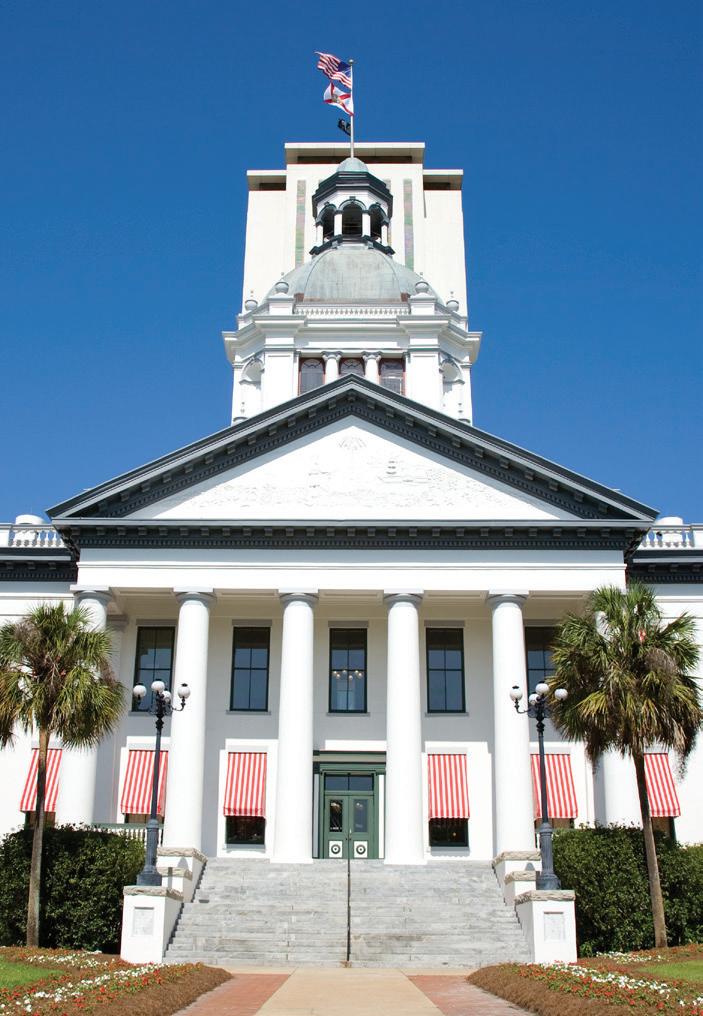 By: Catherine Hartley, AICP, CNU-A
By: Catherine Hartley, AICP, CNU-A
WHAT DOES THE BILL FAIL TO ADDRESS?
There is some ambiguity in the bill. First, it does not define mixed-use. While many planners think of mixed-use as residential located above a commercial-use project, the bill provides no such guidance. To be on the safe side, local governments should liberally construe mixed-use to mean any residential use mixed with any use other than residential on the project site.
The bill also fails to define “accessible” “major transit stop” and directs the local government to refer to its own zoning code. For those local governments that need to amend their code to define it, a suggested definition is a stop that is located on a line with at least 60-minute headways (preferably less) during morning and evening peak hours, Monday through Friday.
Accessible is not defined as a facility compliant with the Americans with Disabilities Act; it can be construed to mean the stop is not separated from the project by a waterway, wildlife area, bridge, or similar feature.
Finally, while the bill is specific about density and height, it does not give guidance on what zoning parameters apply to multifamily developments. It reads: no further action is required by the local government “if the development satisfies … development regulations for multifamily development in areas zoned for such use."
Local government zoning regulations for setbacks, minimum lot size, buffers, etc., can vary widely among zoning districts. The bill gives no guidance on which regulations to use. Further, it is imposing residential requirements on a commercial or industrial zone, the context of which can also vary widely. To avoid confusion, the local government can use its least restrictive residential or residential mixed-use district standards. The local government’s Comprehensive Plan and, where applicable, Local Housing Assistance Plans, likely advocate for reducing regulatory barriers to affordable housing, particularly typical site design requirements.
LEAN-IN TO THE LAW
The Federal Infrastructure Investment and Jobs Act allows Metropolitan Planning Organizations (MPO) within Transportation Management Areas to develop Housing Coordination Plans. Many local governments contribute significant funding to support affordable housing projects, and applications for such funding often contain requirements for these projects to be located in proximity to community facilities such as schools, transit, grocery stores, pharma-
continued on page 20
Summer 2023 / Florida Planning 19
VIDA
cies, and medical facilities. Communicating these requirements and approved projects to the MPO allows them to prioritize multimodal transportation improvements in areas where the population needs them the most and on corridors that are more likely to be developed with affordable housing, based on local government and LowIncome Tax Credit proximity criteria. Forward Pinellas, for example, is taking the lead on creating a dashboard tracking all affordable housing projects across Pinellas County as part of its Housing Action Plan. Mapping all of these projects gives the agencies that fund transit and other multimodal projects the ability to visualize a systemwide need to connect affordable housing with jobs, schools, services, and recreation.
There are a number of zoning requirements that are considered barriers to affordable housing and housing choice. Several local governments, like Tampa and Hillsborough County, completed a thorough examination of these issues as a condition of CDBG funding. Minimum parking requirements are one of the most expensive requirements to fulfill: According to RS Means, an average surface parking space costs between $5,000-$10,000 per space, while the average parking garage space costs $25,000 per space, and this does not include the cost of land. This cost is passed on to the consumer. The bill requires local governments to consider reducing parking requirements for affordable housing projects. This is an excellent opportunity to evaluate parking requirements in general. Many local governments are amending their codes to eliminate or reduce minimum parking requirements, particularly in downtowns and in proximity to transit. Residents of affordable housing and lower-income areas tend to own fewer cars than others, and many subsidized projects also support special populations, such as the elderly and disabled, who cannot drive. Reducing parking requirements also furthers other community goals of reducing impervious surfaces, increasing the tax base, increasing connectivity, enhancing public health, and reducing greenhouse gas emissions.
SITE DESIGN
One code requirement that has no basis in health, safety, or welfare is additional open space requirements per residential unit. This deserves a second look, especially in highly urbanized areas. It is in addition to density, setbacks, minimum lot size, minimum open space, buffering, and landscaping. It is typically not functional open space and is unfortunately often used to segregate housing types from one another, which has the effect of segregating people by income in “pods.”
Instead, consider reallocating green space to the streetscape. Green space along a corridor is often either overlooked or inadequate to support shade trees but has multiple benefits: Drivers tend to drive slower along tree-lined streets and they have the additional benefits of absorbing stormwater and pollutants, reducing the heat island effect, and even reducing crime
Other typical code requirements that are barriers to housing –particularly missing middle housing – include minimum unit sizes and spacing between buildings in excess of what is required in the Florida Building Code, minimum lot sizes that are larger than what the density allows, requiring enclosed garages, and requiring dumpsters for small projects that can easily be serviced with roll out trash cans.
In short, this is an opportunity for local governments to “lean in” to reduce the regulatory barriers to housing in general in a market where demand is higher than supply, driving costs up to unaffordable levels. Local governments are losing subsidized units almost as fast as they are being produced, and prioritizing initiatives to support market rate and affordable housing can help ease the pain.
It can take two years to get from start to finish to get a rezoning approved; simply reviewing and amending your code to allow by-right the things you say you want in your comprehensive plan would be a major accomplishment to increase production. Developers literally look for communities that do not have a cumbersome process with an unsure outcome to build their projects.
Now is the time to plan for your desired physical form in policy and then code for what you want. After all, that’s planning – not reacting.
Catherine Hartely, AICP, CNU-A, is a Team Manager at Benesch. She can be reached at chartley@benesch.com

20 Summer 2023 / Florida Planning
[LIVING] LA
LOCAL continued from page 19
2023 florida planning conference
RECEPTIONS & TOURS
jacksonville l september 5 - 8, 2023
RECEPTIONS
TUESDAY NIGHT OPENING NIGHT RECEPTION
Hyatt Regency Jacksonville River Deck
The opening reception will be held at the conference hotel, the Hyatt Regency Jacksonville Riverfront, on the River Deck overlooking the scenic St Johns River and downtown Jacksonville.

WEDNESDAY NIGHT RECEPTION
First Wednesday Art Walk, Downtown Jacksonville
The Wednesday evening event will be held in conjunction with Jacksonville’s First Wednesday Art Walk. Participants will be able to explore the Downtown Northbank urban core, discover local businesses, and experience the area’s public art and the work of local artists and musicians. Explore three major hubs: James Weldon Johnson Park, The Jessie (duPont Center), and Melanin Market at The Breezeway at Vystar Tower, and all the businesses and public art in between.
THURSDAY NIGHT ROOTED IN HISTORY RECEPTION
The Jessie Ball duPont Center, 40 East Adams Street
The final reception on Thursday evening will take place at the Jessie Ball duPont Center in the heart of downtown Jacksonville, just a few blocks from the conference hotel. “The Jessie” is a nonprofit complex and adaptive reuse of the main branch of the Jacksonville Public Library system, originally built in 1965.
MOBILE TOURS
ST. AUGUSTINE AND MASTER PLANNED COMMUNITIES
This mobile workshop will visit and discuss the planning efforts related to St. Augustine, the oldest continuously inhabited European-established settlement in the contiguous United States, and several new master-planned communities in Jacksonville’s Southside and St. Johns County, the state’s fastest-growing county.
Master-planned communities that will be visited during this mobile workshop include Seven Pines, eTown, Beachwalk, Palencia, and Nocatee. Located in northern St. Johns County,
Nocatee is a 23.48-sqaure-mile community master planned around a desire to transform the unique setting of the land into a place with an exceptional quality of living, while still preserving the area’s peaceful beauty. Home to 100 residents in 2008, Nocatee is the second fastest-growing master-planned community in the nation, with more than 20,000 residents today.
Next, visit the Nation’s Oldest City, St. Augustine, and learn how the original city plan served the Spanish residents and how Henry Flagler’s ambitious 19th-century development changed the city into what we know today. A box lunch and bottled water will be provided.

FERNANDINA BEACH, AMELIA ISLAND, AND THE TIMUCUAN PRESERVE
Fernandina Beach, Amelia Island, and the Timucuan Preserve. Visit the Isle of Eight Flags and engulf yourself in the Gullah Geechee Cultural Heritage Corridor while learning more about various planning initiatives underway throughout Nassau County. First, you will enjoy a guided tour of the City of Fernandina Beach’s rich history in its charming 55-block National Register Historic District, Amelia Island’s Victorian seaport village.
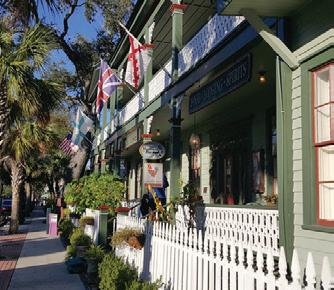
Next, the tour will travel to Old Town, platted by the Spanish in 1811 and dedicated in 2022 as one of 43 UNESCO-documented U.S. Middle Passage arrival locations. The tour’s last stop on the island will be at the A.L. Lewis Museum at American Beach, a beach community established in 1935 by Florida’s first Black millionaire for African American vacationers once denied access to area beaches during segregation.
We’ll follow a scenic route back to the hotel, driving through Amelia Island, Big Talbot Island State Park, Little Talbot Island State Park, the National Park Service-managed Timucuan Ecological and Historic Preserve, and JaxPort. A box lunch and bottled water will be provided.
JAXPORT: BEHIND THE SCENES
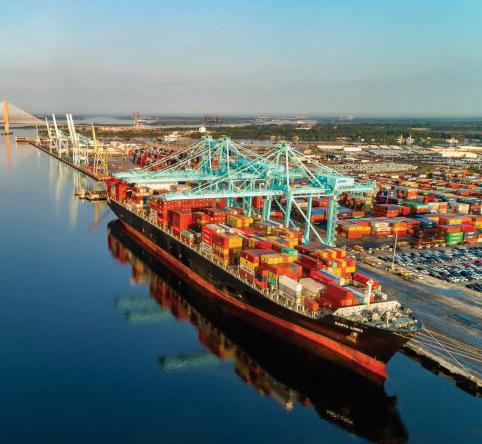
Travel back to 1562, and you would see Jean Ribault and his French Huguenots crossing a shallow sand bar into what is now called the St. Johns River. In 1565,
continued on page 22
Summer 2023 / Florida Planning 21
[RECEPTIONS] & TOURS
continued from page 21
English traders sailed into the mouth of the St. Johns and traded guns and ammunition for food and a vessel with the French Huguenots who had settled at Fort Caroline. This transaction was the first recorded act of international waterborne commerce in the New World; hence, Jacksonville is known as America’s First Port. Today, the Port of Jacksonville is one of the largest deepwater facilities in Florida and one of the country’s largest vehicle import/export centers. This tour will offer a rare, behind-thescenes visit to the Jacksonville Port Authority’s (JAXPORT) largest marine facility – Blount Island Marine Terminal. Originally known as Goat Island, the Blount Island Marine Terminal is a major focus of JAXPORT’s plans to become one of the Atlantic Coast’s largest container terminals and logistics hubs. All JAXPORT tour attendees must sign a liability waiver.
RIVERSIDE/AVONDALE & SAN MARCO
Riverside/Avondale & San Marco. Explore two large walkable historic neighborhoods with unique shopping and dining options. Platted in 1869, the Riverside-Avondale neighborhood is the largest nationally registered historic district in Florida. This neighborhood features an eclectic mix of architectural styles, as well as expanding commercial areas and numerous parks. Explore the new challenges facing these revitalized and thriving neighborhoods. Stops at key points in the neighborhood include the Five Points, Memorial Park, and the Shops of Avondale. Participants will then visit San Marco to observe various infill projects, infrastructure improvements, challenges, success stories, past planning, and current planning efforts. Once known as the City of South Jacksonville, San Marco is home to Jacksonville’s most successful 1920s Florida Land Boom development. The neighborhood continues to undergo significant infill redevelopment. The mobile workshop will include a guided walking tour of the neighborhood, discussing infrastructure improvements, challenges, success stories, past planning, and current planning efforts. The tour will include stops at key points in the neighborhood, including San Marco Square and Fletcher Park. Bottled water will be provided.
THE BEACH COMMUNITIES: MAYPORT, ATLANTIC BEACH, NEPTUNE BEACH, AND JACKSONVILLE BEACH

Beach voted to retain their own municipal governments. Along with historic Mayport Village, this community group is collectively called the Jacksonville Beaches. A peninsula until 1912, this 37-mile barrier island is home to a diverse collection of neighborhoods and communities, ranging from the resort community of Jacksonville Beach and Naval Station Mayport to the historic fishing village of Mayport.
Today, the beach communities are addressing a multitude of challenges and opportunities, including addressing building height restrictions, downtown redevelopment, and the revitalization of a historic working waterfront village. This mobile workshop’s stops include Downtown Jacksonville Beach, Beaches Town Center, and Mayport Village. Bottled water will be provided.
JACKSONVILLE’S ORIGINAL SUPERHIGHWAY: THE ST. JOHNS RIVER
The St. Johns River is a major waterway in the State of Florida and a key landmark within Northeast Florida. The river is a multifaceted resource in the region. It provides recreation, habitat, water, and historical context and is a significant waterway for industry and the military as well as an expanding international port facility.
This water taxi tour will be narrated by the St. Johns Riverkeeper, an organization established to ensure a clean and healthy river for current and future generations. Guests will explore strategies being employed to advocate for a thriving St. Johns River Watershed that sustains healthy ecosystems for future generations.
The tour will take participants east and north of the city to look at historic sites, bridges, new waterfront developments, neighborhoods, and a public park only accessible by boat. Bottled water will be provided.

EMERALD TRAIL, BLACK HISTORY & WITHINTRIFICATION
Emerald Trail, Black History & Withintrification. Growing out of LaVilla, Jacksonville’s oldest Gullah Geechee community, the birthplace of the Chitlin Circuit and the location of the first documented live performance of the blues in the country, Northwest Jacksonville is one of Florida’s largest and oldest urban African American districts. It is also home to the Emerald Trail and a focal point of JTA’s plans for an autonomous mass transit system.
An ambitious plan to link Jacksonville’s urban core neighborhoods, the Emerald Trail is a public/private partnership between the city of Jacksonville and the nonprofit Groundwork Jacksonville.

When the city of Jacksonville consolidated with Duval County in 1968, the cities of Jacksonville Beach, Atlantic Beach, and Neptune continued on page 23

22 Summer 2023 / Florida Planning
[RECEPTIONS] & TOURS

continued from page 22
When completed in 2029, this signature outdoor destination will encompass approximately 30 miles of trails, greenways, and parks that encircle the urban core.
This mobile workshop will have various stops along recently completed and under construction portions of the Emerald Trail and McCoys Creek restoration projects. It will also include a tour of the new $60-million Jacksonville Regional Transportation Center (JRTC) and a presentation on JTA’s proposed U2C, an autonomous transit system that will link downtown with adjacent neighborhoods.
Along the way, the tour will visit cultural sites in Northwest Jacksonville, including a Negro Leagues baseball park and explore ongoing “withintrification” initiatives. In contrast to gentrification, “withintrification” refers to revitalization that’s driven by the people already in the neighborhood.
THE RIVER TOWNS OF NORTHEAST FLORIDA
Steamboats first appeared on the St. Johns River for the first time in the 1860s. During the next several decades, the St. Johns River became Florida’s first major tourist attraction for vacationing Northerners. By the mid-1880s, Sanford had become a pivotal distribution center due to the development of commercial steamboat service. The river became the state’s first “highway,” enabling homesteaders to move into the central part of the state. During this era, Green Cove Springs and Palatka emerged as important interior port cities along the river. Established in 1854 as White Sulfur Springs, Green Cove Springs became the Clay County seat in 1871. Further south, Palatka was founded in 1821 and is the principal city of the Palatka Micropolitan Statistical Area.
Located across the river, the community of East Palatka was founded during the 1880s as an agricultural center along Henry Flagler’s Florida East Coast Railway and is the focus of the Chapter’s Community Assistance Planning Team (CPAT) pilot project. Stops include Spring Park in Downtown Green Cove Springs, Downtown Palatka, and East Palatka. Bottled water will be provided. Casual attire, including comfortable shoes, a hat or visor, sunglasses, and sunscreen is recommended.
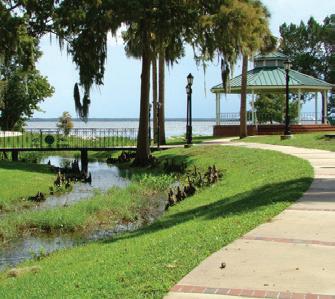
THE SPORTS DISTRICT, HISTORIC EASTSIDE, AND SPRINGFIELD
The Sports District, Historic Eastside, and Springfield. This mobile workshop will explore three popular adjacent urban districts with distinct challenges and opportunities. Home to some of the city’s best examples
of historic architecture, Historic Springfield also boasts a thriving collection of locally owned small businesses and eateries. In recent years Springfield has experienced considerable change, including new development and the pressures of gentrification and displacement. The tour will explore the iconic neighborhood’s history and the trends shaping its future.
Originally a streetcar suburb and maritime industrial area, the Sports & Entertainment District is exploding with new development, ideas, and activity centered around its urban riverfront and the National Football League’s Jacksonville Jaguars franchise. Here, guests will experience a behind-the-scenes tour and discussion with Jaguars representatives about the ongoing and future NFL stadium renovations and ancillary urban mixed-use development projects.
Quickly settled by freedmen and women after the civil war, the Eastside is Jacksonville’s oldest intact reconstruction-era Gullah Geechee community. A stone’s throw from TIAA Bank Field, it’s also one of the city’s most walkable and architecturally unique areas. Here, we’ll learn and see several innovative strategies underway to address affordable housing, elimination of food desert status, protect cultural heritage and encourage economic development without displacement or loss of cultural heritage and sense of place.
DOWNTOWN REDEVELOPMENT WALKING TOUR
Thriving downtowns are the heartbeat of every major city worldwide, and Jacksonville is no different. A dynamic, pedestrianfriendly Downtown Jacksonville serves as a premier center for the arts, dining, retail, entertainment, business, and urban living in North Florida.

Downtown Jacksonville dates to 1822, when Isaiah Hart established a settlement at the narrow point in the river where cattle crossed, known as Wacca Pilatka to the Seminole and the Cow Ford to the British. The crossing served the Old Kings Road that ran from St. Augustine to St. Mary’s, Georgia. On May 3, 1901, downtown was destroyed by the third largest urban fire in the country’s history, behind the Great Chicago Fire of 1871 and the 1906 San Francisco Earthquake. The aftermath led to the development of Florida’s first major early 20th-century central business district.
Over the years, the momentum to (re)develop Jacksonville has had many starts and stops. But, right now, downtown is on the doorstep of a significant change. Join Build Up Downtown as we walk through the urban core and learn about its unique history and projects under construction, in the pipeline, and proposed. Bottled water will be provided.
Summer 2023 / Florida Planning 23
REGISTRATION UPDATE

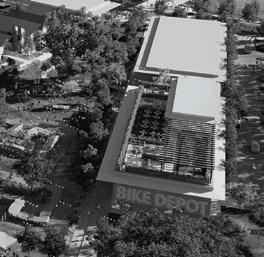
Registration for the 2023 Florida Planning Conference closes on Aug. 25. There will be no onsite registration. Review all registration options here







If you have already registered for the conference but want to add on a mobile tour or workshop, you can do that here.
MAKE PLANS TO ATTEND THE ANNUAL MEMBER MEETING!
The 2023 Annual Member Meeting will be held at the Hyatt Regency Jacksonville Riverfront from 6 – 6:30 pm on Sept. 5 in room Grand 3. At this meeting, members will be asked to VOTE on:
• The 2024 Budget | Budget Narrative


• The 2024 Strategic Operational Plan

































• The 2024 Legislative Mission, Guiding Principles, and Policy Positions























Please take the time to review them before September.
For those members who are unable to attend the annual meeting but who wish to vote on these items, a proxy system has been created. This proxy system form allows you to decide whether you want to register your vote in advance and submit it to the Chapter Office for use at the annual meeting OR delegate
your vote to another member who will be attending the annual meeting if you are unable to participate.
DOWNLOAD THE PROXY FORM HERE






There are two important requirements when using the proxy voting form: 1) Mailed proxies must be received at the Chapter Office by 5 pm on Aug. 25, 2023, to ensure timely receipt and transfer to the meeting; 2) all proxies, whether mailed or hand-carried, must be verified by the APA Florida Secretary or Executive Director so please completely and legibly fill out all required fields on the proxy.
If you have any questions, please contact the Chapter Office at 850-201-3272 or here
24 Summer 2023 / Florida Planning
JA CKSONVILLE | GAINES VILLE | OCALA 2100 SE 17th Street, Unit 802, Ocala, Florida 33471 | (352) 414-4621 11801 Research Drive, Alachua, FL 32615 | (352) 331-1976 8465 Merchants Way, Suite 102, Jacksonville, FL 32222 | (904) 619-6521 At CH W we survey, plan , design , engineer, adminis te r and inspect with a purpose: to positive ly transform the communities we se rve. CH W’s experienced planners work side -by-side with client s and communities to provide innovative visioning, conceptual planning , and guidance for sustainable design and development throug h citize n and stakeholde r engagement www.chw-inc .com
Congratulations to Florida's newest members of the American Institute of Certified Planners
APA Florida is proud of our 1,700 members who have joined our ranks as members of the American Institute of Certified Planners (designated as AICP). We want to congratulate our most recent members as well as celebrate those members who have committed to maintaining their certification through the years. For more information on the November exam, study guides, and groups, please visit the AICP Exam & Preparation page.
Congratulations to the following 39 members who passed the AICP Certification Test in May 2023:
Kevin Andrews
Corinne Arriaga
Jared Austin
John Baker
Joseph Barker
Savannah Brown
Ying Cao
Jady Chen
Sabreena Colbert
Alvimarie CoralesCuadrado
Casey Dendor
Danh Do
Keisha Fink
Judith Frankel
Beverly Frazier
Victoria Gagliano
Nicole Galasso
Taylor Hague
Stephan Harris
Michael Huston
Sandra Denise Kelly
Monet Moore
Dewayne Nodine
Ashley Northrup
Cameron Palmer
Dylan Paul
Omar Peerzada
James Resta
Rob Rosner
Bronce Stephenson
Juan Suarez
Francine Sutton
Kelly Turner
Jamie Viveiros
Jillian Ward
Hannah Ward
Ryan Wenger
Kirk Wickersham
Wencui Yang
BYLAWS COMMITTEE
Every two years, the Chapter President appoints a Bylaws Committee, chaired by the Chapter Secretary, to review the Bylaws and identify any changes needed for consistency with national APA bylaws or Chapter practices and policies.
The proposed bylaws amendments require approval by a majority of those chapter members voting. Voting will occur Aug. 22 - Sept. 21. All members will receive an electronic notice with the link to cast a ballot. Click here to review all the proposed changes before voting begins. The results will be posted on the chapter website and in the October issue of eNews & Notes.
Summer 2023 / Florida Planning 25
A MESSAGE FROM THE EXECUTIVE DIRECTOR
Stefanie Svisco
I hope you are having a wonderful summer! We are busy here in the chapter office getting ready for FPC23.
I am now six months into the Executive Director role and I continue to be in awe of the dedication of our volunteers and staff.
In the last few months, I closed out my first legislative session and while we didn’t get the wins we wanted, we are not going to give up advocating for better community planning policy throughout Florida. I also attended my first Public Policy Workshop that had a record 500+ registrants! Rounding out the spring season, I participated in my first Executive Committee retreat in DeBary, where we brainstormed over two days to update the chapter’s Strategic Plan. (You can download it here.)
As we head toward FPC23, I am elated that there are more than 850 planners already registered and that number continues to grow daily. (If you haven’t already done so, registration ends on Aug. 25!) I look forward to the opportunity to meet many of you, so please be sure to say hello.

Have a wonderful rest of the summer. See you in Jax!
ON THE MOVE
DOVER AWARDED SEASIDE PRIZE
The SEASIDE Institute announced that Victor Dover, FAICP , will receive the 30th SEASIDE Prize, along with his business partner Joe Kohl. Both are the co-founders of Dover, Kohn & Partners – Town Planning.
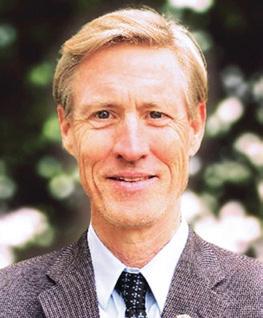
The duo will be recognized for their New Urbanism work in February. Read more about the prize here
INSPIRE PLACEMAKING ADDS BREDFELDT TO TEAM

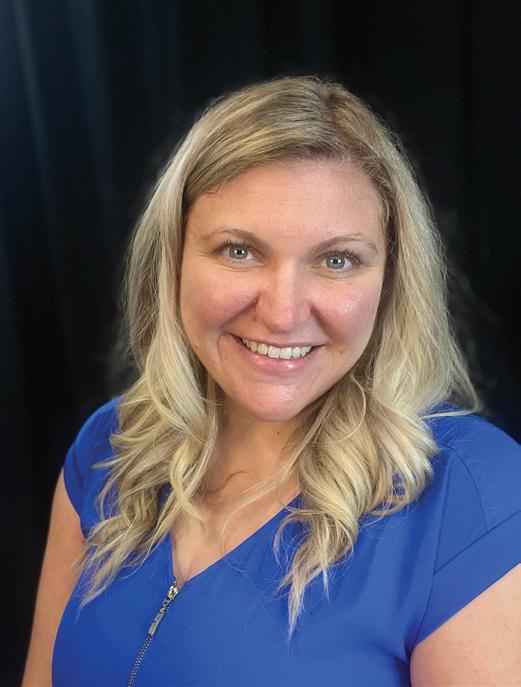
Erik Bredfeldt, AICP, Ph.D., joined Inspire Placemaking Collective as its Director of Economic Development. Erik was previously the Economic Development and Innovation Director for the City of Gainesville.
Erik has 30 years of experience in administrative and project management, with a focus on community planning and economic development. Activities include those related to urban planning, community development, and project management through a partnership philosophy emphasizing the balance between community and markets.
BEEN PROMOTED? WON AN AWARD? MOVED TO A NEW JOB?
Let us know! Fill out this form so we can inform your colleagues that you ARE are Planner on the Move!
26 Summer 2023 / Florida Planning
APA Florida
PLANNERS
APA FLORIDA WORKING FOR YOU
and mapper in connection with his or her professional employ ment or practice.
The APA Florida Executive Committee has approved a Strategic Plan that will move the organization forward by enhancing member value and experiences through educational events and networking opportunities.
You can review the proposed 2024 Strategic Plan here, and if you are attending FPC23, stop by the Annual Members Meeting at 6 pm on Sept. 5 to vote on this important document as well as other chapter organizational business, such as the proposed 2024 Budget and our 2024 Legislative Mission and Policy Positions

See page 24 for Annual Meeting Details.
More than 750 planners have already registered to attend the 2023 Florida Planning Conference, which is once again in Jacksonville. The host committee has created a strong program from enticing mobile tours to phenomenal feature speakers, and of course, the highest quality breakout sessions. In case you have not already done so, be sure to register before Aug. 25!
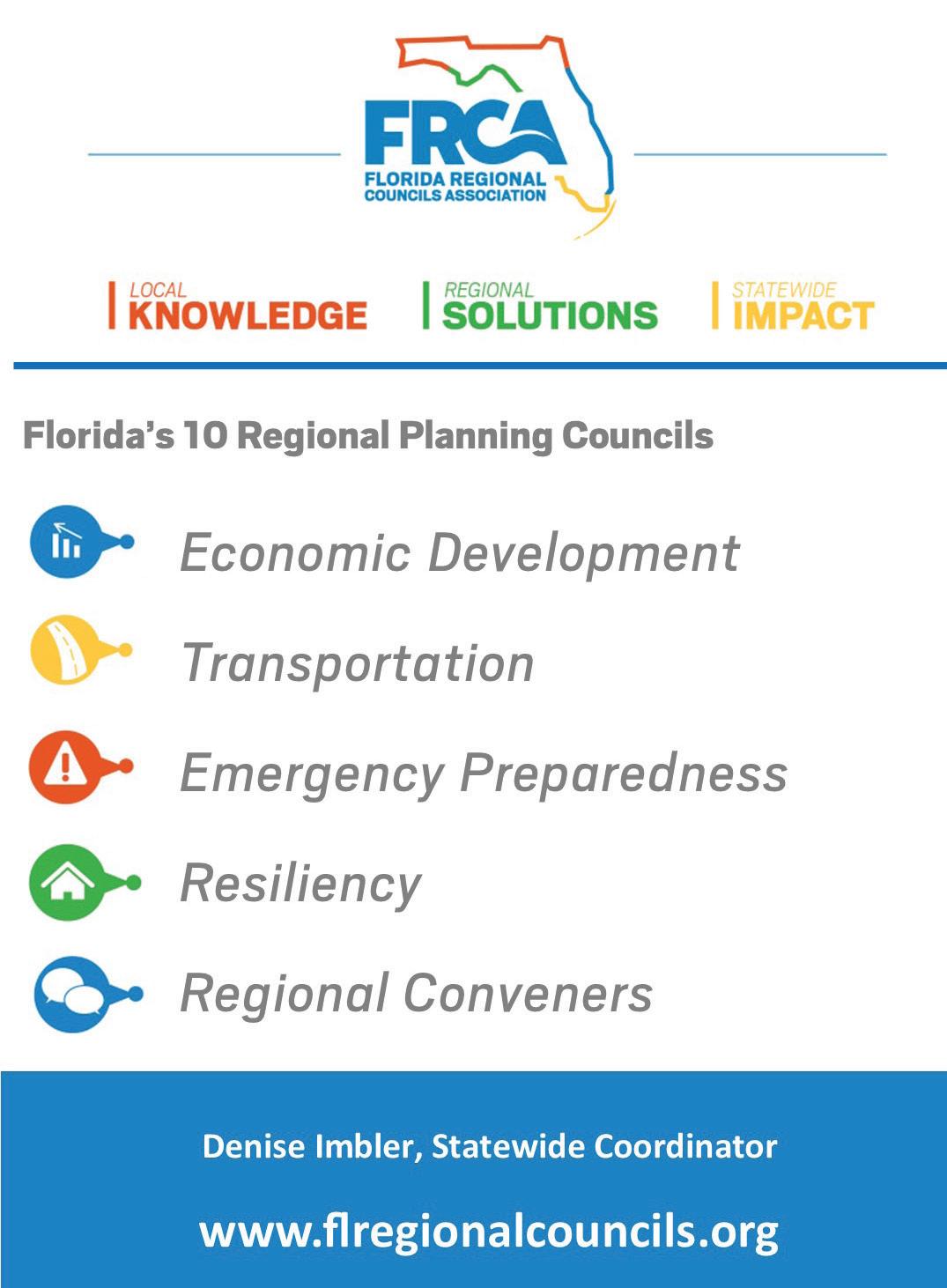
We’re excited to host our first Student Poster Competition & Session to showcase up-and-coming planners’ research and studio projects. If you are attending FPC, stop by for judging at noon on Wednesday to cheer on these talented future planners!
See you in Jacksonville!
STRENGTHENING AICP IN FLORIDA
Thank you to the dozens of members who volunteered to help us study why some state and other public agencies do not consistently support the AICP credential as an important threshold to higher levels of job responsibility and internal career advancement, nor do they typically cover the cost of taking the exam or the dues required to remain a member in good standing.
Additionally, this study group will look into whether it would make sense to pursue an initiative to include planners in the Consultants Competitive Negotiation Act (CCNA), which currently includes “professional services” within the scope of the practice of architecture, professional engineering, landscape architecture, or registered surveying and mapping, as defined by the laws of the state, or those performed by any architect, professional engineer, landscape architect, or registered surveyor
We will report back any findings and recommendations the group determines are actionable.
AFFORDABLE HOUSING CLEARINGHOUSE ESTABLISHED
On the heels of the Live Local Act passage, chapter leaders established a clearinghouse of planning experts in affordable housing development and policy that will provide quick response guidance to individuals, organizations, and communities seeking to access best practices, case studies, and relevant research that can be used to support plans and proposals for housing throughout Florida across the urban, suburban, and rural transect.
The work of the clearinghouse will consist of periodic virtual meetings but will primarily focus on responding to requests for information and policy insights for state, regional, and local governments. The clearinghouse will also provide quick response to state and federal legislation, and local ordinance review.
Keep an eye on the chapter website and social channels for any updates or member calls to action the group may request.
Summer 2023 / Florida Planning 27
FLORIDA PLANNING CONFERENCE BACK IN JAX
2024 AND BEYOND
….
[CONSULTANTS] DIRECTORY
Advertise in the Consultants Directory


The Consultant Directory is a fitting place to showcase your firm. $250 buys space for a year in the newsletter (four issues) plus inclusion in our web-based consultant directory. Display ads to promote your business, conference, projects and more are available. Contact



office at 850-201-3272 for rates and details.


[PRESIDENT'S] MESSAGE
continued from page 3
of the Traffic Circulation Element rules, some required maps were missing, and they were willing to tolerate LOS E and F-rated roads in favor of multimodal improvements for walking, bicycling, and safety. By 9J-5 standards, it simply did not meet the criteria, and it wasn’t long before I moved on to other planning projects. I know the state folks were just doing their job, but I don’t think I was cut out to be a comp plan reviewer.
I share that story because, in the wake of the 2011 Community Planning Act and the demise of state agency growth management oversight, Florida has now shifted to a different form of top-down edicts. Now we have the Florida Legislature pre-empting local government land use controls and development regulations, restricting how revenue can be generated to cover costs of growth, and over-
riding community-based decisions to manage development impacts. Term limits and the demands of fundraising have turned lawmakers into impatient arbiters of what needs to be done, dictating onesize-fits-all approaches to communities across the state. That puts a lot of pressure on Florida planners and local elected officials in the face of rapid growth and rising prices for everything from housing to getting around.


I’m confident we’ll continue to evolve and adapt to these circumstances, but it’s clear Florida planners and each of our communities will need to continue leading with persistence of vision, clarity of purpose, and innovation to meet today’s challenges.

28 Summer 2023 / Florida Planning
In
a Livable Community, people of all ages can make their town or city a lifelong home Learn about what’s happening in Florida. Contact Laura Cantwell at lcantwell@aarp org
the
Tallahassee Office Telephone: 850.224.7332 dat@theriaquelaw.com Trial Appellate Planning and Land Use Law Administrative Comprehensive Plans Land Development Codes Orlando Office Telephone: 407 347 5388 sbs@theriaquelaw.com www theriaquelaw com
Chapter
Arizona Florida | Georgia North Carolina Texas www.rviplanning.com Helping Power Florida’s Future www.vhb.com
Our purpose is to inspire people to be outside and engage in the community around them.
Whit Blanton FAICP APA Florida President
ANNUAL SPONSORS

[FLORIDA] PLANNING
Published by the Florida Chapter, American Planning Association, the Florida Planning digital magazine has a current circulation of 3,000 members, subscribers and other readers. Four issues are published a year.


CHANGES OF ADDRESS
For APA members, Send to:
Member Records Department

American Planning Association

205 N. Michigan Ave., Ste. 1200 Chicago, IL 60601
Fax: 312-786-6700 or log onto www.planning.org/myapa
ARTICLES
Florida Planning welcomes articles, announcements, letters, pictures and advertising. Call 850-201-3272 regarding articles. The next issue will be published November 2023.
DEADLINES
Article deadlines are generally four weeks prior to publication. Ad deadlines are generally two weeks prior to publication. Consult the editor for any exception to this schedule.
ABOUT THE CHAPTER
APA Florida is a non-profit organization funded through membership dues and fees. Contributions are also welcomed for general purposes and earmarked programs. Please note that contributions are not tax deductible.
For news and information on chapter concerns, visit the APA Florida website at florida planning.org










APA Florida
2017 Delta Boulevard, Suite 101 Tallahassee, FL 32303
Phone: 850-201-3272
Fax: 850-807-2576
[UPCOMING] EVENTS
SEPT. 14: READINESS, RESPONSE AND RECOVERY: MANAGING URBAN FORESTS FOR DISASTERS



Tarpon Springs. Hosted by the APA Florida Sun Coast Section. Experts will cover topics such as risk assessment, debris staging, preparing contracts, navigating FEMA, Florida-specific emergency resources, and even replanting the urban forest. Participants will leave prepared to handle the next storm in their community. Information here. 4.75 CM
SEPT. 18: THE INTERSECTION BETWEEN COMMUNITY DESIGN AND PUBLIC HEALTH
Webinar. Hosted by 1000 Friends of Florida. University of Miami School of Architecture Professor Joanna L. Lombard will discuss the elements of healthy communities and how they can enhance physical and mental wellness through social interaction, physical activity, and connection to nature. She will address how healthier design can help ameliorate the impacts of climate change, and the impacts on disadvantaged communities. She and Victor Dover, FAICP, principal / cofounder of Dover, Kohl & Partners and coauthor of the landmark book Street Design: The Secret to Great Cities and Towns, will then have a conversation on strategies to integrate healthier design into communities, followed by a question-and-answer period. Information here Free. 1.5 CM.
OCT. 18: THE UNDERLINE: INNOVATIVE APPROACHES TO LINEAR PARK PLANNING AND LANDSCAPE DESIGN


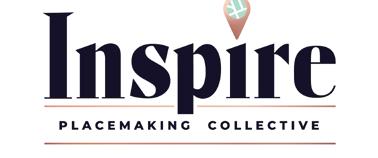

Webinar. Hosted by 1000 Friends of Florida. Friends of The Underline has been committed to transforming underutilized land below Miami’s Metrorail—from the Miami River to Dadeland South Station—into a 10-mile linear park, urban trail, and public art destination. The third phase, now underway, will encompass some of the underline’s most innovative and ambitious design elements, including ponds and bioswales designed to collect and filter rainwater runoff in a garden. This webinar will discuss the evolution of the public-private partnership to convert unused urban land into a major community asset and focus on innovative landscaping strategies, including the incorporation of micro-forests and bioswales in the landscape plans. Information here Free. 1.5 CM
For more information on these and other APA Florida events, please visit florida.planning.org/calendar/

[THANK YOU] TO OUR
CGAsolutions.com 954.921.7781 Planning and Zoning Comprehensive Planning Land Development Codes Municipal Planning Transportation Planning Urban Design































 By: Catherine Hartley, AICP, CNU-A
By: Catherine Hartley, AICP, CNU-A























































































